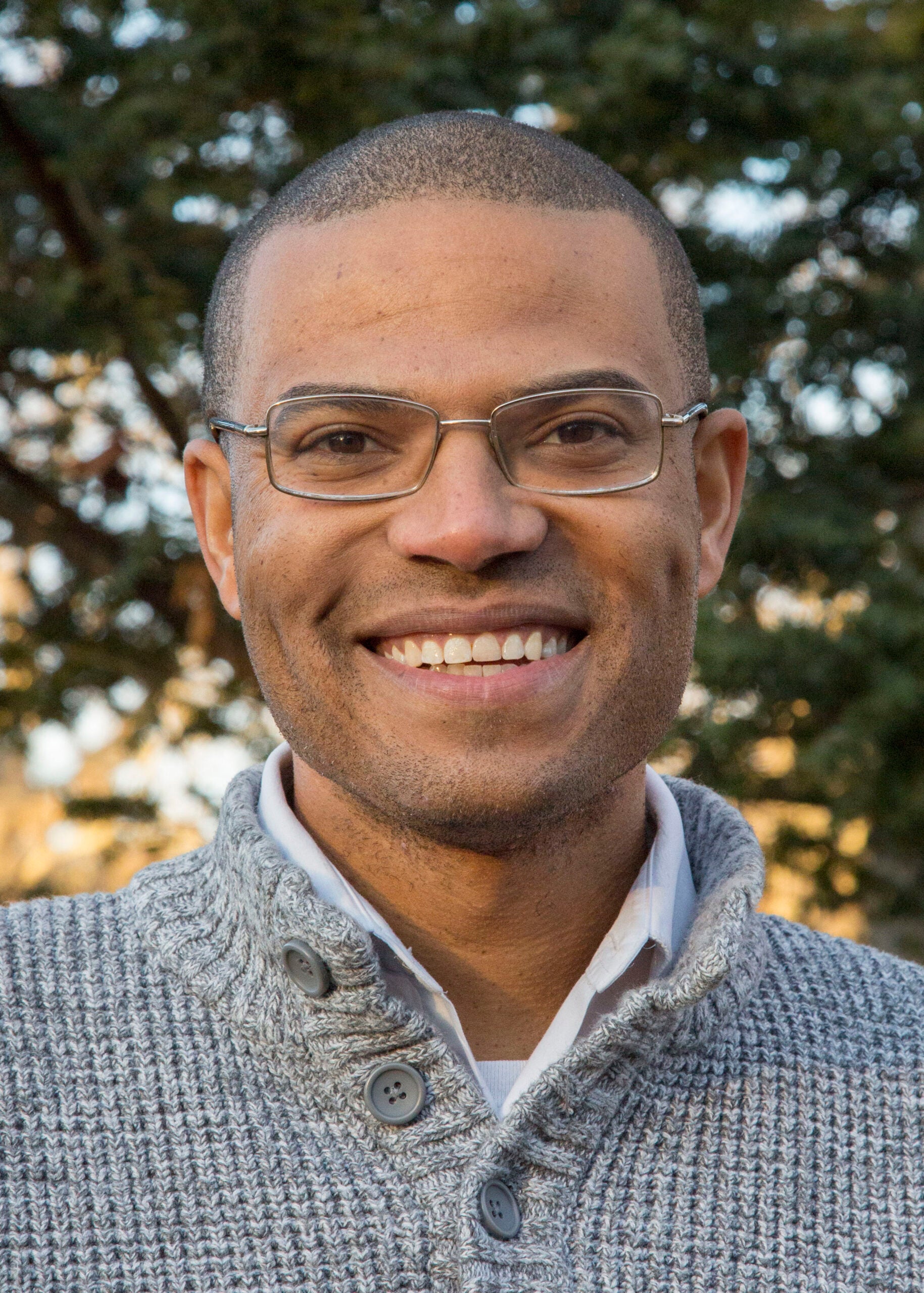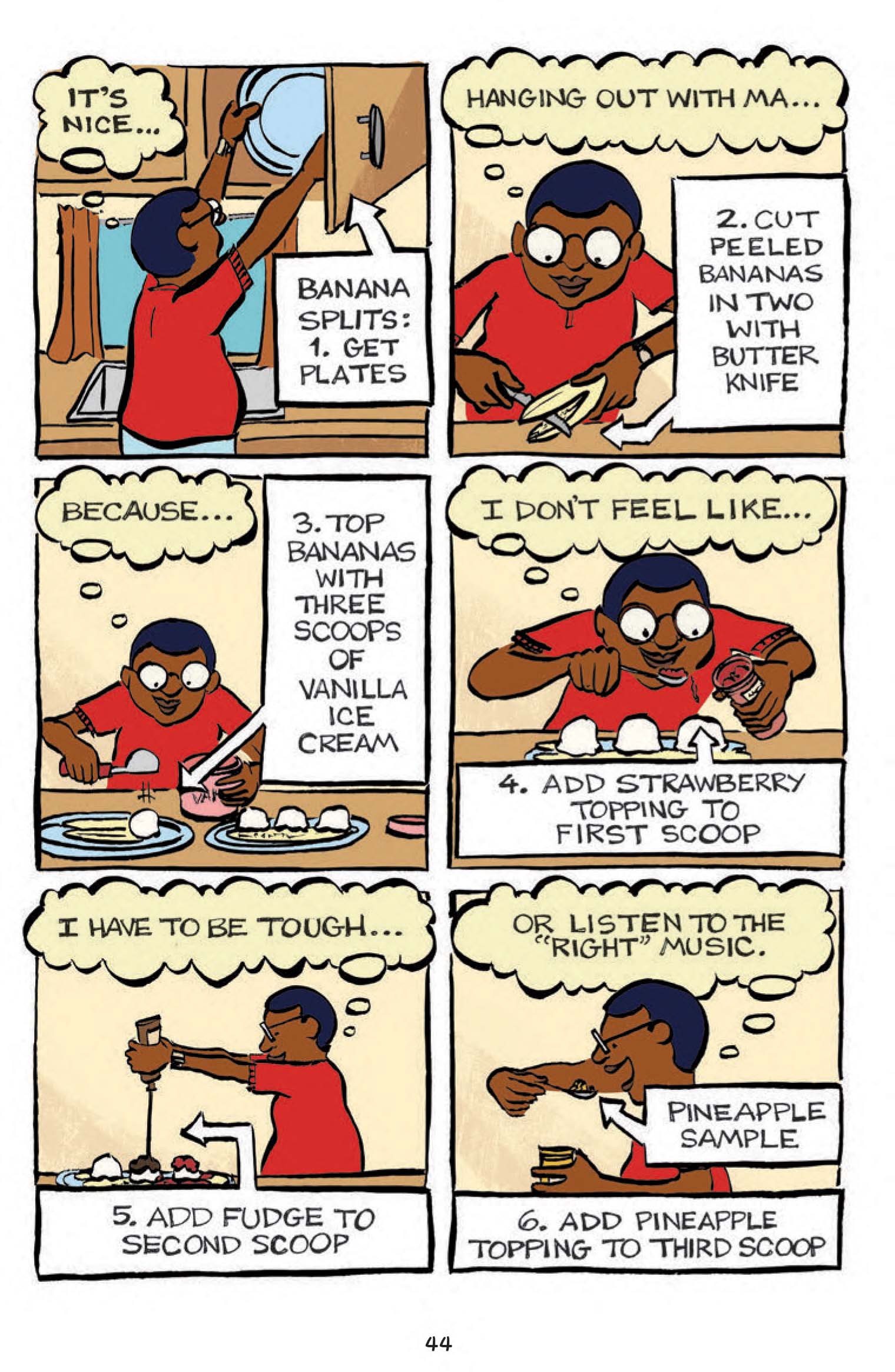Books
The Boston-area illustrator’s new graphic novel, published by Scholastic, is a Target Kids Book Club pick for April.

Trigger warning: If you would rather not remember what middle school was like, you may not want to read “Timid,” the new middle-grade graphic novel by local cartoonist and illustrator Jonathan Todd, coming April 2 from Scholastic.
But if you happen to be in middle school right now, or know someone who is, it’s unlikely you’ll find a better depiction of just how fraught and awkward those years can be — and reading it may even make you feel better about being stuck in them.
“I was just hoping to kind of take shame out of it,” says Todd, a longtime comics educator and co-founder of the Boston Kids Comics Fest, about tween-years awkwardness. “Like, these are just very natural middle school feelings, and they’re human. And so I wanted the book to be a companion for any kid who might feel alone.”
Cecil Hall, the young Black boy who serves as the focal point of “Timid,” is not Todd himself, exactly, but they do have much in common — including a life-changing experience upon moving to Massachusetts and discovering the self-segregation common among kids of different races here.
“My old school was predominantly white, [but] I never felt different from all the other kids,” says Todd, who now lives near Boston with his wife, two kids, and a lemon beagle named Cariño. “So it was the first time I felt like, based on the setup of the cafeteria, that I was somehow supposed to choose to go to a table of all Black students.
“I really was frozen,” he recalls, “and that feeling of confusion and shame, it kind of stayed with me and ultimately, like 30 years later, inspired my book.”
On a recent episode of the “Strip Search” comic strip podcast, Todd talked about the long road to “Timid,” how much of Cecil is Jonathan (and vice versa), and how individual stories can sometimes turn out to be universal.
Responses have been edited for length and clarity.
Boston.com: This book has been many years in the making. How did the process start, and how did it come to fruition?

Jonathan Todd: Yeah, the seed of the idea started when I was in middle school, but I had no idea that it would be a graphic novel. It was more the experience of, frankly, being shocked on my first day of middle school, and that inspired the book … In brief, although my family is from Boston, we lived in Florida for about five years, and then we moved back up. My family moved to Wellesley, Massachusetts. But back in Florida I was kind of a popular kid. Sixth grade, I was into comics, and we made a Kids Comics Journal. I had my classmates make it with me.
But then I moved to Boston. Suddenly. I was in a big middle school, and all the friend groups had already been formed, and I was kind of frozen when I walked into the cafeteria and all the other Black boys were at one table … That was my first time seeing kind of a racial segregation in that way, and in a really intimate way.
So that was the impetus. But then other things happened — I wanted to be a political cartoonist, but that didn’t work out for me, to be a full-time cartoonist. So I rediscovered comics, and at the time in alternative comics they were doing a lot of confessional-type comics. And I didn’t see a lot of things for kids that were really true-to-life middle school things at that time. And so I thought, what if we did this kind of alternative comics, but for kids? So I thought back to middle school, and how hard it was — I thought, hey, this might be a good idea for a book.
You address this a little in your author’s note, but “Timid” certainly feels autobiographical when you read it. So how much is actually based on your life?
Yeah, I guess the way to best describe it is that Cecil very much is how I was personality-wise in middle school, but the actual plot points are different … it’s very much fiction. But the protagonist is very much how I functioned. And his inner thoughts are very much the inner thoughts I had.

I really like how you hear his inner monologue throughout the whole book. How did that help you to propel the story along?
I guess for me, when I read graphic novels where there’s a narration above [the panels] it always felt like I was somewhat removed from the story. It just felt more like a picture book. And what I love about comics is that we have these tools of the thought bubble, so you could, in real time, know what someone’s thinking. I wanted people to journey with Cecil.
You probably noticed that you never see what other people [in the book] are thinking, even though you [as the author] could show what people are thinking. But in real life, when you’re going through life, you have no idea. So I just felt by having it as thought balloons versus narration, it just gave the story more intimacy. I wanted to be in present tense, and I think something with narration is more looking back and reflective. So in a way, it’s not a memoir. It’s more like this is in real time. You are journeying through these awkward, tough middle school years and months with the protagonists.
You mentioned before about your experience with the segregated cafeteria tables when you came back up to the Boston area … Boston of course does not have the best reputation when it comes to race relations. What are you hoping to get across about that experience?
Yeah, I guess I wanted to make it kind of universal … I feel like Cecil’s reactions were very natural, based on his experience in middle school, this kind of feeling like you were forced to be friends with people who looked like you just because they looked like you, and that didn’t seem fair to me. I didn’t have the freedom to be friends with whoever I wanted, so I was trying to explain where Cecil’s coming from, and wanting kids to feel like they shouldn’t have to feel like they’re forced into a box.
And so, in a way, it also makes him universal — yes, Cecil’s experience happens to do with his cultural background, but I think people could feel isolated and alienated for any reason, like it might be a queer identity, it might be their body size … They feel alone. So I really wrote the book for anyone who kind of feels alone for any reason, and I think a lot of us go through that.
A lot of cartoonists would love to do what you’ve done — create a piece of work that’s personal and professionally published. What advice would you give to younger creators coming up who have an idea and want to bring it to that next level?
My advice is just to love what you’re doing. I had no idea that Scholastic would end up publishing it. For a while I just wanted to draw a syndicated comic strip. And then, you know, you send it out to editors, and you could spend your whole career just pitching comic strips. I’m like, “I just want to do something complete, complete it, even if it’s not published. Even if I have to self-publish this, I just want to get it out …” It was just the love of the craft, and then kind of everything else fell into place.
The other thing is that I did want it to make it a publishable book, even if a publisher didn’t pick it up. I wanted it to be of a quality where a publisher would want to publish it. So my big challenge was learning how to write long stories. I did this other graphic novel idea, and I got 50 pages in drawing it … I ended up hiring a freelance editor, and I had to pay for this, and she gave me feedback. So then, when I got her feedback, I was like, “Wow, I really don’t have a clue on how to write long stories,” because I was a comic strip guy.
I decided, I’m gonna go back to school, and I got a master’s in creative writing [at Lasell University] just to learn to tell long stories. I learned about workshopping stories, and I think that gave me a good foundation. And that, I think, made the difference.
See, I knew I should have gotten that master’s.
No time like the present!
Listen to the full conversation with Jonathan Todd below:
Upcoming ‘Timid’ appearances by Jonathan Todd:
- Book release and talk, Belmont Books, Tuesday, April 2, 6 p.m.
- Book Launch party, Putterham branch of Public Library of Brookline, Saturday, April 6, 2 p.m.
- Graphic Novel workshop and book talk, Boston Public Library – Central Library, Tuesday, April 16, 3 p.m.
- Book event at The Morse Institute Library, Natick, Friday, April 19, 3 p.m.
- Boston Comics in Color Festival, Reggie Lewis Track and Athletic Center, Roxbury, Saturday, April 20, 10 a.m.
- Silver Unicorn Kids Graphic Novel Festival, Acton, Saturday, April 20, 11 a.m. (Jonathan will speak at 1 p.m.)
- Book talk/signing, Frugal Bookstore, Roxbury, Saturday, April 27, 2 p.m.
- Free comics/graphic novel coaching, Frugal Bookstore, Roxbury, Friday, May 3, 5 p.m.
- Comics-making workshop with L.J. Baptiste, Greater Roxbury Book Fair, Roxbury Branch of Boston Public Library, Saturday, May 18
- Boston Kids Comics Fest, Northeastern University, Saturday, June 8
- Free comics journalism camp for 4th-8th graders, Southborough Library, July 15-19
Newsletter Signup
Stay up to date on all the latest news from Boston.com








